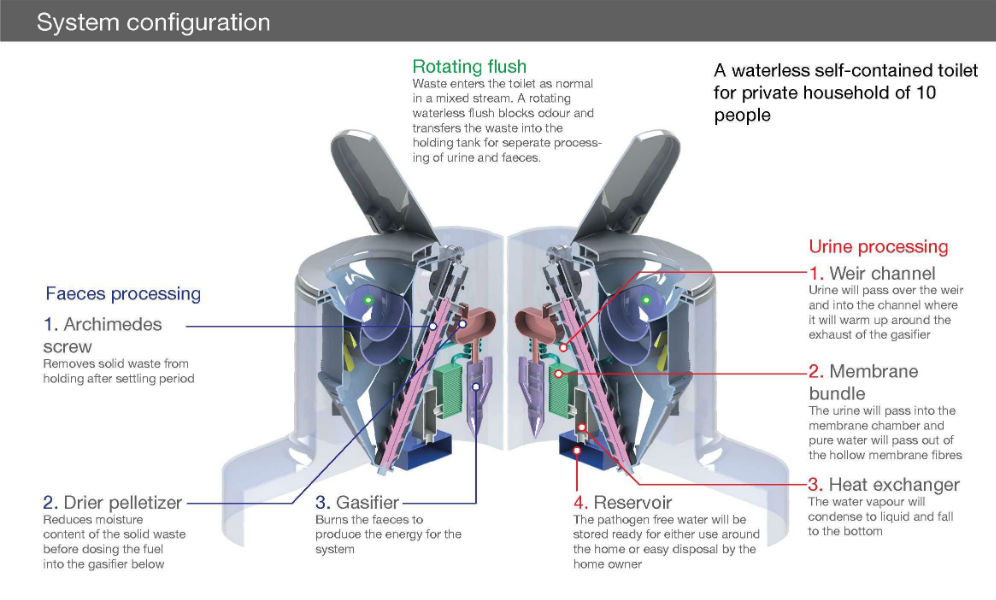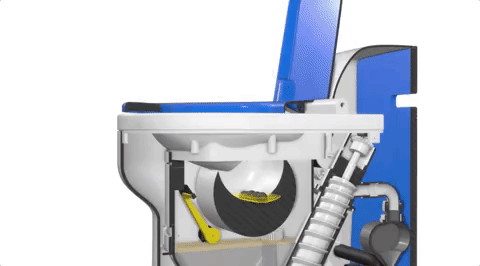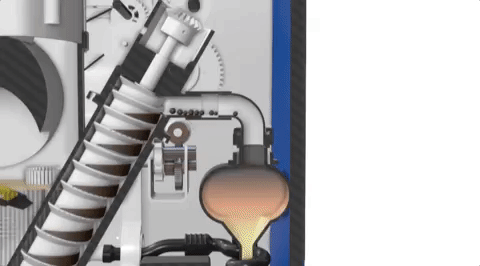This is the revolutionary water-less toilet poised to rock the developing world
Roughly four years ago, the Bill and Melinda Gates foundation invested $710,000 into the development of a revolutionary waterless toilet and, now, they've gone into a second investing round.
Though it is not public knowledge how much the second grant totals, we know that it is "substantially more" than the first round.
The Nano Membrane Toilet, as as it is known by its developers, "will be used in dense urban areas where a number of factors make providing good sanitation very challenging," says Alison Parker, a lecturer in International Water and Sanitation at Cranfield Water Science Institute. She adds that they will be build in areas "where it would be possible to facilitate visits from a maintenance technician." The toilets need maintenance every six months.

It functions by turning the toilet bowl 270 degrees and dropping the waste in a vat underneath, while a scraper clears off the bowl itself.
The solid waste stays on the bottom and the liquid rises to the top.

Nanofibers move the water vapor, that comes off of the liquid, into a chamber and stores the vapor for later use as potable water.
The solid waste is transported up a circular chamber via battery power and dropped into a chamber where it is coated with an odor-reducing wax. It is stored and can later be burned as fuel.

Every week, local technicians remove the stored waste and water and check the batteries.
According to Parker, one Nano Membrane Toilet can accommodate up to 10 people for as little as $0.05 per day, per person.
Connect Wallet
To earn tokens and access the decentralized web, select an option below
(It's easier than you think)